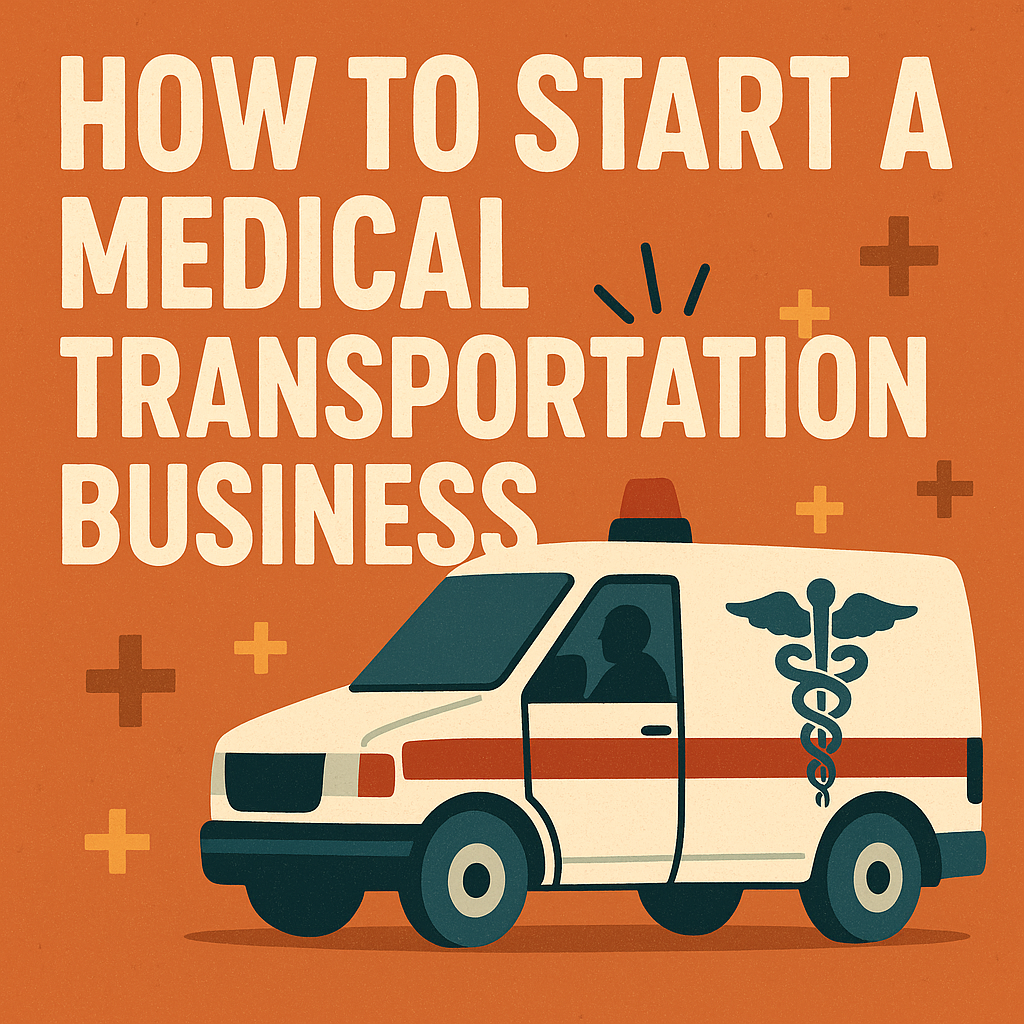Over 3.6 million Americans delay medical care annually due to transportation barriers. This gap creates a unique chance to launch services that improve lives while generating steady revenue. With the non-emergency healthcare transit sector projected to grow 9% yearly through 2028, entrepreneurs can tap into a $15.6 billion market.
Initial investments typically range from $40,000 to $80,000, covering essentials like specialized vehicles and insurance. Successful operators combine compassionate service with smart business practices, serving seniors, patients with disabilities, and those requiring regular treatments.
This guide simplifies complex requirements into actionable steps. You’ll learn about licensing rules across states, vehicle safety standards, and effective client acquisition strategies. Whether managing two vans or twenty, prioritizing patient comfort and reliability builds lasting community partnerships.
Key Takeaways
- Address critical healthcare access gaps through essential mobility services
- Capitalize on consistent industry growth fueled by aging demographics
- Plan for initial costs between $40K-$80K for proper fleet setup
- Master local compliance standards before accepting clients
- Develop referral networks with clinics and senior centers
Understanding the NEMT Industry Landscape
Navigating healthcare becomes challenging without reliable transit options. Non-emergency medical transportation fills this gap by connecting patients to vital care. These specialized services handle scheduled trips that don’t require emergency vehicles but remain essential for maintaining health.
More Than Just Rides
NEMT services transport people to dialysis centers, therapy sessions, and pharmacies. Unlike ambulances, they focus on routine medical needs. Over 55 million trips occur yearly across the U.S., supporting those with mobility limitations or chronic conditions.
“Transportation barriers cause 5.8 million Americans to postpone care annually,” notes a UC Davis Health study.
Who Needs These Services?
Three key groups drive demand:
- Seniors needing frequent check-ups
- Disabled individuals requiring accessible vehicles
- Patients managing long-term treatments
Baby boomers aging into Medicare boost industry growth. Rural areas face particular challenges, with 15% of residents lacking public transit options. Urban centers also see rising needs due to crowded transportation systems.
Healthcare reforms expanded coverage for preventative care, increasing appointment demands. Providers who understand local infrastructure gaps can build sustainable operations. Tailoring vehicles and schedules to community needs creates trusted partnerships with medical facilities and clients alike.
Benefits of Starting a Medical Transportation Business
Every 4 seconds, someone in America schedules a non-urgent healthcare visit. Specialized transport fills gaps between ride-sharing apps and ambulances, creating opportunities for operators who prioritize reliability. This sector combines heart with hustle – improving lives while building sustainable revenue streams.
Transforming Lives Beyond Transportation
Regular dialysis patients require 12+ monthly trips. Wheelchair users need vehicles with lifts. Caregivers juggle work and chemo schedules. By addressing these realities, you become part of patients’ healthcare journeys.
-
Before launching your small business, it’s crucial to understand how much a business license costs based on your location and industry type.
“Our drivers don’t just open doors – they open possibilities for better health outcomes,”
Three measurable impacts emerge:
- 91% of seniors report reduced stress using dedicated medical rides
- 72% fewer missed appointments with reliable transport
- 58% faster treatment access in rural areas
Financial Stability Meets Growth Potential
Medicare covers 80% of qualifying trips, creating predictable cash flow. Private insurers increasingly reimburse these services too. Operators enjoy multiple revenue streams:
| Service Model | Payment Source | Avg. Trip Value |
|---|---|---|
| Scheduled Appointments | Government Programs | $35-$75 |
| Recurring Treatments | Private Insurance | $50-$120 |
| Specialized Transports | Direct Payment | $90-$200+ |
Start with one wheelchair van and scale as referrals grow. Many successful operators add vehicles every 6-12 months. Flexible scheduling allows drivers to handle 8-15 daily trips while maintaining vehicle upkeep.
Market Overview and Growth Trends in NEMT Services
Aging demographics and rural healthcare gaps fuel unprecedented growth in patient transit solutions. The NEMT sector is projected to hit $15.6 billion by 2028, expanding at 9% annually. This growth stems from critical needs in underserved communities and systemic healthcare inefficiencies.
Industry Statistics and Future Projections
Every 78 seconds, a baby boomer turns 65 – creating 10,000 new daily candidates for specialized transport. Rural areas account for 37% of unmet medical ride requests, while urban centers face overcrowded public transit systems. Healthcare providers increasingly partner with reliable operators to reduce $150 billion in annual costs from missed appointments.
“Transportation barriers add $150 billion annually to U.S. healthcare expenses through delayed treatments,”
Three factors position this market for sustained expansion:
- Medicare Advantage enrollment doubling since 2013
- 45% of disabled adults reporting transit difficulties
- GPS routing software cutting fuel costs by 22%
Operators leveraging real-time scheduling apps see 18% higher client retention. With 23 states lacking adequate rural transport options, new providers can establish footholds before major competitors arrive. The sector’s recession-resistant nature makes it particularly appealing during economic uncertainty.
Business Registration, Licensing, and Permitting Essentials
Building a compliant operation requires careful navigation of legal frameworks. Registration costs typically range from $1,000 to $3,000 – a smart investment to avoid fines or operational shutdowns. Three pillars form your foundation: business structure selection, location-specific rules, and proper certifications.
Choosing the Right Legal Structure
Your entity type impacts taxes, liability, and growth potential. Many operators prefer LLCs for personal asset protection, while corporations suit those seeking investors. Consider these options:
| Structure | Tax Flexibility | Liability Shield | Setup Complexity |
|---|---|---|---|
| Sole Proprietorship | Low | None | Simple |
| LLC | High | Full | Moderate |
| S-Corp | Medium | Full | Complex |
Consult a business attorney to match your long-term goals with the optimal framework.
State-Specific Regulations and ADA Compliance
Montana requires annual wheelchair lift certifications, while Florida mandates $1 million liability insurance. Research your state’s:
- Vehicle inspection frequency
- Driver background check depth
- Medical equipment storage rules
“ADA compliance isn’t optional – it’s your ticket to serving 61 million disabled Americans,”
Obtaining Necessary Permits and Certifications
Start with these four essentials:
- Federal Tax ID (IRS Form SS-4)
- State NEMT license (varies by location)
- National Provider Identifier (NPI)
- Commercial vehicle permits
Factor in 6-8 weeks for approvals. Partner with local chambers of commerce for expedited processing in some regions.
Acquiring and Equipping Your NEMT Vehicles
Effective medical transit services rely on properly equipped vehicles to meet diverse needs. Operators face critical choices between minivans and full-size transports, balancing upfront costs with long-term functionality. Accessibility modifications often determine your service capacity – 82% of clients require wheelchair accommodations according to industry surveys.
Matching Fleet to Client Requirements
Converted minivans suit urban routes with tight parking, while high-roof vans better serve rural areas. Budget $16,000-$83,000 per vehicle depending on features:
| Vehicle Type | Capacity | Key Features |
|---|---|---|
| Minivan | 1-2 wheelchairs | Lower operating costs |
| Full-Size Van | 3-4 wheelchairs | Extra storage space |
| Ambulation Transport | 5+ passengers | Folding seats |
ADA compliance requires 56″ door openings and 30″x40″ lift platforms. Partner with certified upfitters for securement systems handling 2,500 lbs per anchor point.
Life-Saving Gear and Protections
Smart equipment choices reduce costs without compromising care. The Broda Traversa wheelchair ($7,500) offers stretcher-like support at half the price. Essentials include:
- Four-point wheelchair restraints
- Oxygen tank brackets
- EMT-grade first aid kits
“Proper tie-down systems prevent 94% of transport-related injuries,”
Prioritize vehicles with non-slip floors and dual climate controls. Regular maintenance checks keep your fleet compliant across all 50 states.
Securing Insurance and Managing Operating Costs
Protecting your operation starts with smart insurance planning and cost control strategies. Balancing proper coverage with budget realities keeps services running smoothly while safeguarding clients and assets. Let’s explore essential protections and expense management tactics.
Types of Insurance Coverage for NEMT
Operators need layered policies to address unique risks. Commercial auto insurance ($5,000-$12,000 annually) forms your base layer – required in all states. General liability coverage handles accidents at pickup locations, while professional liability protects against service errors.
Don’t overlook these critical add-ons:
- Workers’ compensation for driver injuries
- Umbrella policies for catastrophic claims
- Equipment replacement riders
Companies like Progressive and Geico offer NEMT-specific bundles. Pro tip: Ask insurers about discounts for safety features like wheelchair cameras.
Budgeting for Ongoing Maintenance and Fuel Expenses
Vehicle upkeep consumes 25-40% of monthly budgets. Schedule oil changes every 5,000 miles and brake inspections quarterly. Fuel costs vary widely – rural operators average $1,200 monthly versus $800 in cities.
Three cost-saving strategies:
- Negotiate fleet maintenance contracts
- Use fuel cards with cashback rewards
- Install GPS trackers to optimize routes
“Preventive maintenance cuts repair bills by 35%,” notes Fleetio’s 2023 industry report.
Set aside 15% of profits for unexpected repairs. Track expenses using tools like QuickBooks to identify savings opportunities over time.







